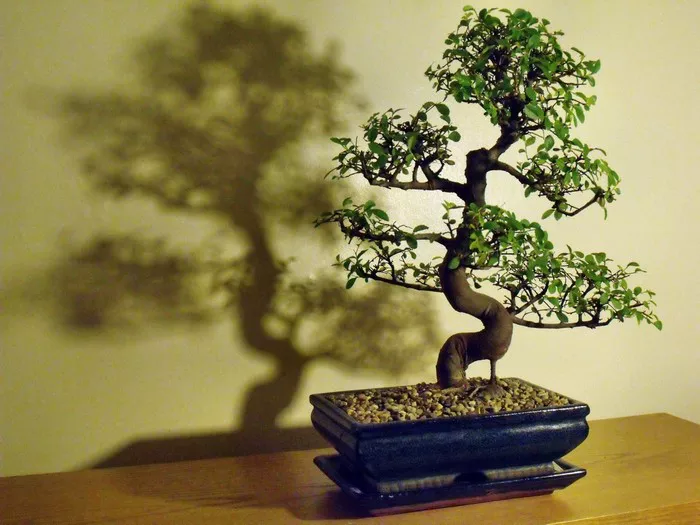Bonsai, the ancient Japanese art of cultivating miniature trees, has captivated enthusiasts worldwide with its beauty and symbolism. While many bonsai are propagated from cuttings or nursery stock, growing bonsai from seeds offers a unique opportunity to witness and shape the tree’s entire lifecycle. However, successfully planting bonsai seeds requires patience, attention to detail, and a deep understanding of the tree species you intend to cultivate. In this article, we will explore the best practices for planting bonsai seeds, from seed selection to nurturing the young seedlings into mature bonsai trees.
Understanding Bonsai Seeds: Selection and Preparation
Before embarking on your bonsai seed planting journey, it is crucial to select the right species of tree. Not all trees are suitable for bonsai cultivation, and each species has specific characteristics that will influence the final appearance and care requirements of your bonsai. Some popular choices for bonsai include Japanese maple (Acer palmatum), Chinese elm (Ulmus parvifolia), and junipers (Juniperus spp.).
When selecting seeds, opt for fresh, viable seeds from a reputable supplier or source. Seeds should be plump, without visible damage or signs of disease. Additionally, consider the natural habitat of the tree species, as this will provide clues about its preferred growing conditions (e.g., sunlight, humidity, and soil type).
Preparing for Planting: Tools and Materials
Gathering the necessary tools and materials before planting bonsai seeds will streamline the process and ensure optimal conditions for germination. Here is a list of essential items:
Seeds: Fresh and viable bonsai seeds of your chosen species.
Growing Medium: A well-draining, sterile bonsai soil mix or a blend of akadama, pumice, and lava rock.
Containers: Small pots or seed trays with drainage holes to prevent waterlogging.
Watering Can or Spray Bottle: For gentle watering without disturbing the seeds.
Transparent Cover or Plastic Wrap: To create a mini-greenhouse effect for humidity control.
Grow Lights or Sunny Window: Adequate light is crucial for seed germination and seedling growth.
Labeling Materials: Tags or markers to identify the species and planting date.
Ensure all tools and containers are clean and sterilized to prevent fungal infections or other pathogens that could harm delicate seedlings.
SEE ALSO: The Art of Bonsai: How to Cultivating Oak Trees
Step-by-Step Guide to Planting Bonsai Seeds
Step 1: Preparing the Growing Medium
Start by preparing your chosen bonsai soil mix. A typical mix for bonsai seeds consists of akadama, pumice, and lava rock in equal parts. This blend provides excellent drainage and aeration, crucial for healthy root development. Fill your containers or seed trays with the soil mix, leaving a little space at the top to facilitate watering.
Step 2: Planting the Seeds
Carefully place the bonsai seeds on the soil surface, spacing them evenly to avoid overcrowding once they germinate. For larger seeds, such as those from a Japanese maple, gently press them into the soil to ensure good contact while keeping them visible on the surface. Smaller seeds can be sprinkled evenly across the soil.
Step 3: Covering and Watering
Cover the seeds lightly with a thin layer of fine soil or vermiculite. This layer helps maintain moisture around the seeds while allowing light to penetrate. Use a watering can with a fine rose attachment or a spray bottle to moisten the soil thoroughly without displacing the seeds. Avoid overwatering, as excess moisture can lead to fungal issues.
Step 4: Providing Optimal Growing Conditions
Place your seeded containers in a location that receives indirect sunlight or under grow lights. Maintaining a consistent temperature between 65-75°F (18-24°C) will encourage germination. Cover the containers with a transparent lid or plastic wrap to create a mini-greenhouse effect, trapping humidity and warmth essential for seedling growth.
Step 5: Germination and Seedling Care
Monitor the containers daily for signs of germination, which can vary from a few days to several weeks depending on the species. Once seedlings emerge, gradually expose them to more light while ensuring they are protected from direct sunlight, which can scorch delicate leaves.
Step 6: Transplanting and Early Bonsai Training
As seedlings develop their first true leaves and outgrow their initial containers, carefully transplant them into individual bonsai pots. Use a chopstick or similar tool to tease out the roots and spread them evenly in the new container. Continue to provide optimal growing conditions and gradually introduce bonsai training techniques, such as pruning and wiring, as the seedlings mature.
Conclusion
Growing bonsai from seeds is a rewarding journey that requires dedication, patience, and a willingness to learn from the natural rhythms of the trees. By selecting the right species, preparing suitable growing conditions, and providing attentive care throughout the germination and seedling stages, you can cultivate unique bonsai trees that reflect your vision and appreciation for this timeless art form. Remember, each bonsai seedling represents the potential for beauty and harmony between human creativity and the enduring spirit of nature. Enjoy the process and the transformation of your bonsai seeds into miniature masterpieces that will bring joy for years to come.


